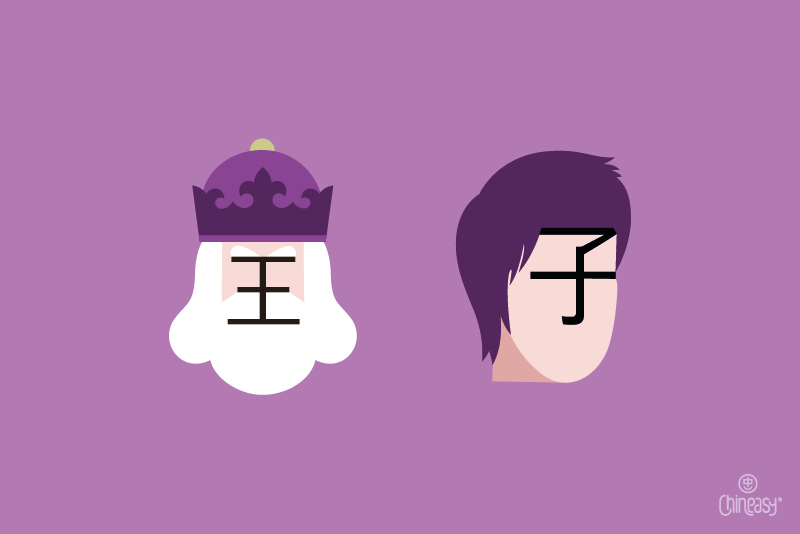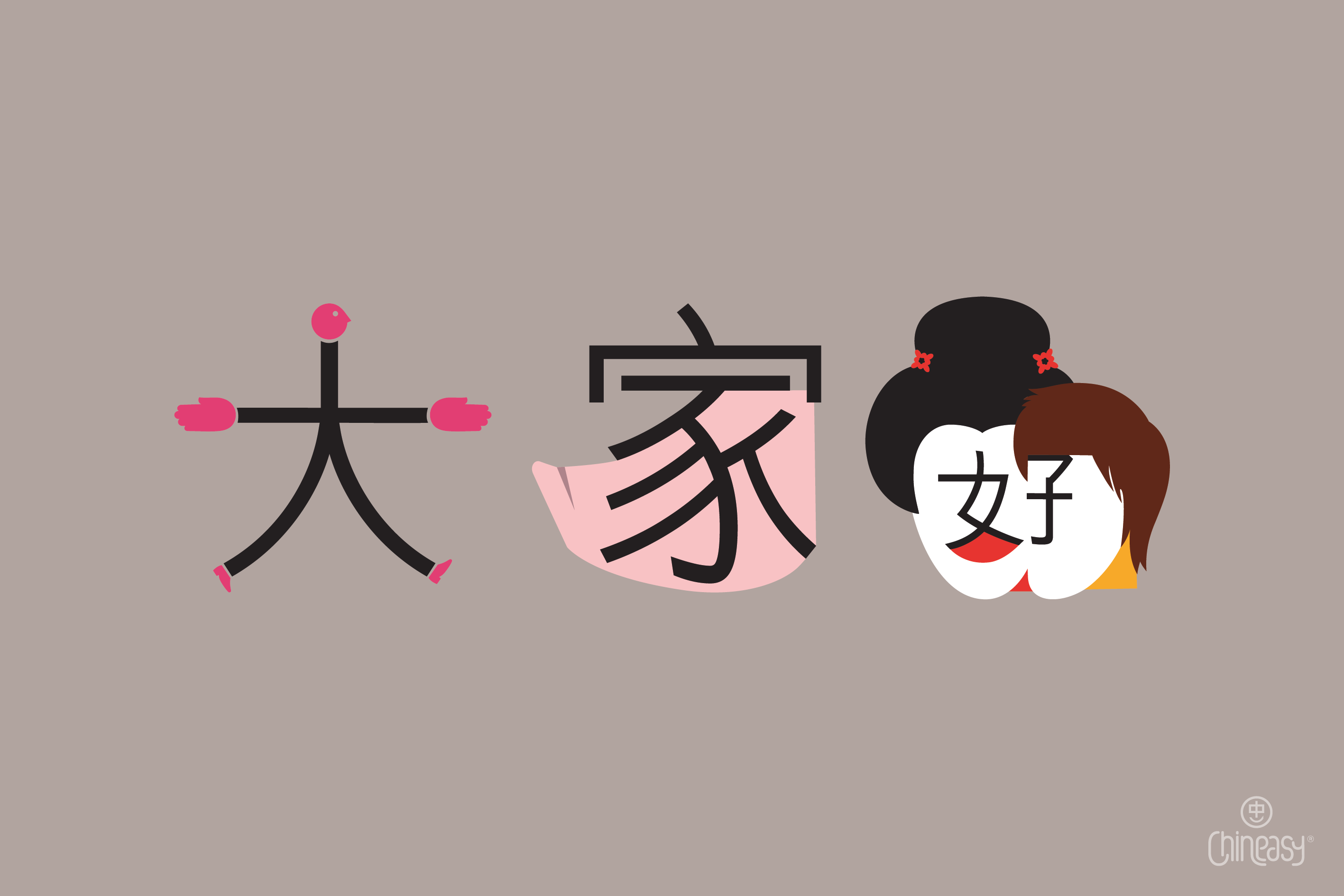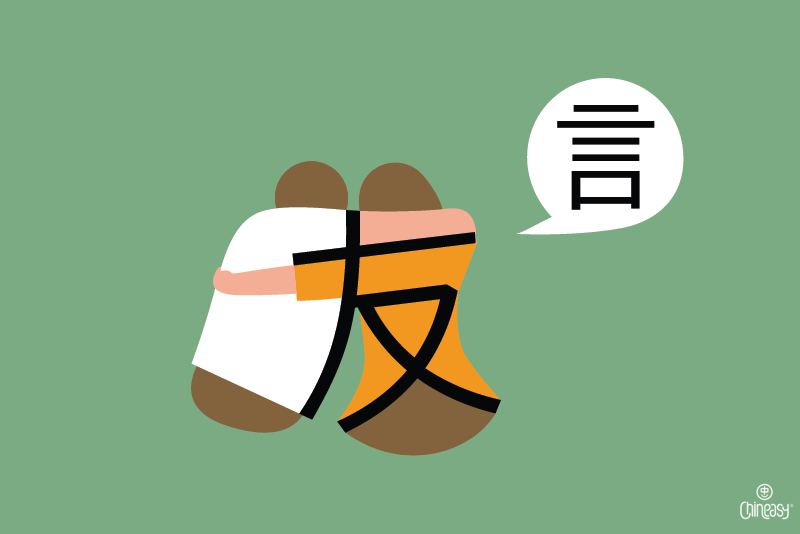How frequently do you find yourself tapping on emojis while texting or navigating through your social media? It’s fair to say that emojis have revolutionized our digital conversations. From beaming smiles to adorable kissing faces and even teary-eyed cats, these small icons allow us to inject powerful emotions into our textual communication, painting a more vivid picture of our feelings, both positive and negative.
Contrary to popular belief, the term “emoji” is not derived from the English word “emotion.” Instead, it originates from the Japanese kanji 絵文字. The first symbol, 絵, translates to “picture” and is pronounced “eh.” The latter, 文字, means “character,” and its pronunciation is “mōji.” When combined, these two phonetics (eh + mōji) create the term we are all familiar with today – “emoji.”
Now that you know a bit more about the word “emoji,” let’s dive into five important Chinese characters that are used in 15 popular emojis. If you’re someone who uses emojis a lot when you text, you’re going to love this post!
To smile 笑
Let’s kick off with an emotion that leaves us feeling elated – the act of smiling, or 笑 (xiào) in Chinese. This character comprises two parts: the bamboo radical ⺮ positioned at the top and 夭 resting below it. It can mean “to smile,” “to laugh,” or “to giggle.”
In its ancient form, the character painted a scene of a bamboo forest on the top of a person wearing a joyful smile. Take a closer look at this compound character – doesn’t it seem as though the character is smiling back at you? Here are some emojis that use 笑 to show different kinds of smiles:
-
slightly smiling face 🙂 微笑
微 means “tiny,” and 笑 means “to smile.” So 微笑 (wēi xiào) means “smile.” For example, you can say 給我一個微笑/给我一个微笑 (gěi wǒ yī ge wēi xiào), which means “give me a smile.”
-
smiling face with halo 😇 天使微笑
天使微笑 (tiān shǐ wēi xià) has four characters, but you already know the last two – 微笑 (wēi xiào; smile). So, we only need to learn the first two characters, 天使. 天使 (tiān shǐ) means “angel.” If you want to say someone has an angelic smile, you can say: 她有一個天使的微笑/她有一个天使的微笑 (tā yǒu yī ge tiānshǐ de wēixiào; she + has + one + measure word + angel + of + smile).
-
smiling face with smiling eyes 😊 笑臉/笑脸
笑 is “to smile,” and 臉/脸 translates to “face.” So, 笑臉/笑脸 (xiào liǎn) means “smiling face.”
-
smiling face with hearts 🥰 愛心笑臉/爱心笑脸
Remember 笑脸 (smiling face)? So now there are just two new characters to learn, 愛心/爱心 (ài xīn). 愛/爱 means “to love,” and 心 means “heart.” So, 愛心/爱心 means “compassion.”
To cry 哭
Nowadays, it’s become more common for people to express a wide range of emotions, including those that might be seen as less positive. This shift can be seen in our growing use of emojis like the crying face in our messages.
The Chinese character for “to cry” is 哭 (kū), created from two “mouth” symbols (口) and a “dog” (犬). Picture a dog crying for food – it’s hard not to feel a little heartache! Here are a few emojis that feature 哭 to communicate various degrees of sadness:
-
crying face 😢 哭泣
Crying can be triggered by a range of emotions, from happiness to sadness and so much more. Similarly, the Chinese character 哭 is a generic term for crying. But when we pair it with 泣 (qì; to sob), forming 哭泣 (kū qì), we get a term that specifically means crying in a sad context, removing any ambiguity. However, it’s worth noting that 哭泣 (kū qì) is less colloquial than the single-character word 哭 (kū).
-
loudly crying face 😭 大聲哭泣/大声哭泣
To express the idea of crying out loud, you can add the term 大聲/大声 (dà shēng) before 哭泣 (kū qì). In 大聲/大声 (dà shēng), 大 (dà) stands for “big” or “loud,” while 聲/声 (shēng) translates to “sound” or “voice.” In Chinese, the descriptor of a verb’s intensity (such as loudly or quietly) must come before the verb. Hence, the phrase correctly translates to 大聲哭泣/大声哭泣, which literally means “loud sound crying,” rather than the reversed 哭泣大聲/哭泣大声.
-
crying cat 😿 哭泣貓/哭泣猫
If you’re a cat owner or even just a cat fan, you might prefer to use the “crying cat” emoji to share when you’re feeling like crying. In Chinese, “crying cat” translates to 哭泣貓/哭泣猫 (kū qì māo). There’s just one new character to pick up here – 貓/猫 (māo), which means “cat.” Interestingly, doesn’t the pronunciation of 貓/猫 sound quite a bit like “meow”?
Remember, it’s okay to share when you’re feeling down. Sometimes, an emoji can be the first step in opening up about our emotions.
Tongue 舌
Sticking out your tongue in real life can often be seen as a tad impolite or impudent. However, in the world of emojis, a protruding tongue takes on a more playful or cheeky connotation, depending on the context.
The Chinese character for “tongue” is 舌 (shé). Originally, 舌 represented a forked tongue peeping out from a mouth (口). Over time, the upper part of the character has evolved into the shape we know today as “千.” Below are the emojis centered around the theme of 舌.
-
face with tongue 😛 吐舌
On its own, 舌 (shé) simply translates to “tongue.” However, when paired with the verb 吐 (tǔ), we get 吐舌 (tǔ shé), which describes the act of sticking out one’s tongue. To illustrate its use, take a look at this example: 對人吐舌不禮貌/对人吐舌不礼貌 (duì rén tǔ shé bù lǐ mào). In English, this translates to “sticking out your tongue at people is not polite.” It’s a handy phrase, reminding us all to keep our manners in check!
-
winking face with tongue 😜 眨眼吐舌
You might recall 吐舌, which means sticking out the tongue. Now, let’s learn two new characters, 眨眼 (zhǎ yǎn). 眨 translates to “to wink,” and 眼 is the word for “eye.” Put together, 眨眼 means “winking the eye.” How fitting for our winking emoji, right?
-
squinting face with tongue 😝 眯眼吐舌
In place of 眨 (to wink), we use another verb, 眯 (mī), to form the phrase 眯眼吐舌 (mī yǎn tǔ shé). 眯 means “to squint.” It’s interesting how both “wink” and “squint” involve closing the eyes in English, and similarly, both Chinese characters 眨 and 眯 share the same radical – the eye (目) radical. It’s a cool little linguistic similarity, don’t you think?
Kiss 吻
What about emojis that hint at romance? Well, you can’t overlook the kiss emojis. In Chinese, “kiss” translates to 吻 (wěn). Notice the mouth (口) radical that’s part of 吻? This character is not just a noun; it can also act as a verb, meaning “to kiss.” Are those love bells ringing? Well, it’s time to uncover three emojis that are all related to 吻.
-
kissing face 😗 亲吻
亲吻 (qīn wěn) is a two-character Chinese word that translates to “kiss” as a noun. However, when used individually within the context of kissing, 亲 (qīn; to kiss) functions only as a verb, not a noun. Here’s a fun fact: 吻 is considered more romantic than 亲. That’s because 吻 suggests a passionate kiss, whereas 亲 typically refers to a friendlier, more casual kiss – think of a peck on the cheek.
-
face blowing a kiss 😘 飛吻/飞吻
In Chinese, to “blow a kiss,” also known as an “air kiss,” you would say 飛吻/飞吻 (fēi wěn). It literally translates to “fly kiss.” For example, if you want to say, “he gave me an air kiss,” you would say 他給了我一個飛吻/他给了我一个飞吻 (tā gěi-le wǒ yīge fēi wěn).
-
kissing face with smiling eyes 😙 笑眼亲吻
Do you recall the characters 笑 (to smile) and 眼 (eye)? When we combine these two, we get 笑眼 (smiling eyes). Add 亲吻 (kiss) to this, and we have the Chinese term for the emoji 😙 (kissing face with smiling eyes): 笑眼亲吻 (xiào yǎn qīn wěn). Note, though, that the order of the words in Chinese is different from English – “smiling eyes” (笑眼) is placed before “kiss.”
Hand 手
Let’s shift gears and talk about “hand” emojis. Unlike face emojis, these tend to get used more in a professional context. The Chinese word for “hand” is 手 (shǒu). Take a good look – doesn’t the character resemble an outstretched hand, palm open, fingers spread wide?
-
clapping hands 👏 拍手
The phrase 拍手 brings together 拍, the Chinese verb for “to clap,” and 手, the noun for “hand.” 拍, a compound character, consists of 扌 (the hand radical) and 白 (white), with the latter acting as a phonetic guide. The clapping-hands emoji 👏 is a popular choice when expressing congratulations, sharing applause, or showing appreciation. It’s like a visual high-five on your screen.
-
waving hand 👋 揮手/挥手
Finally, we have the waving hand emoji. “To wave” in Chinese translates to 揮/挥 (huī). Similarly to 拍, 揮/挥 is a compound character consisting of two elements: 扌 (the hand radical) and 軍/军 (army). Just picture the army members waving (揮/挥) their hands (手) during a military parade. The waving hand emoji 👋 is commonly used to say “hello” or “goodbye.”
And now, it’s indeed time to wave our goodbyes 👋. So, there you have it – an introduction to 5 essential Chinese characters behind 15 popular emojis. W hope you’ve found this journey through Chinese characters and modern emojis both enjoyable and informative. Although we’re saying goodbye for now, remember to keep practicing your Chinese. Every day brings a chance for improvement. Until next time! 😊



